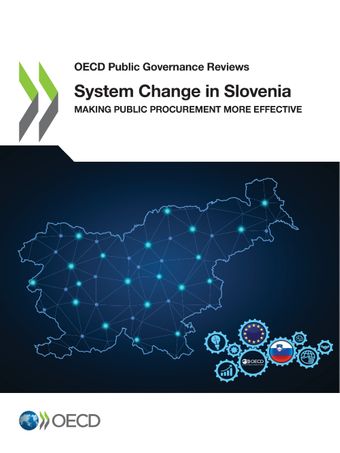System Change in Slovenia: Making public procurement more effective

Overview
In order to respond effectively to cross-cutting problems and provide interconnected services to citizens, governments must transform their approach to increasingly complex issues. In the public procurement system of Slovenia, transformation means creating culturally and behaviourally informed procurement strategies that allow for the exploration of new and innovative procurement processes. This will enable the development of a more responsive and effective public procurement system.
The public procurement system of the Government of Slovenia has a strong legal foundation. Reform efforts have been driven by regulatory changes and have focused primarily on increasing transparency and reducing corruption. As a result, Slovenia has become one of the OECD countries that make the most information about the procurement process available to the public. In addition, the government has undertaken efforts to develop a stronger and more innovative procurement system – a process that has involved changing procurement laws, updating practice in line with international standards, developing guidance documents for procurement officials and sharing good practices throughout the system. However, in spite of these reforms, highly formalised procedures remain and provide limited flexibility for experimentation and little incentive for the application of new procurement and innovative methods. As a result, innovation around procurement and pre-commercial procurement, and the use of innovative and agile development processes, are rare in the Slovenian public sector.
Beyond analysing the legal and foundational elements of the public procurement system in Slovenia, this report seeks to identify possible levers that could activate greater innovation within the system and lead to better outcomes. In co-operation with the Slovenian public sector, a systems approach has been used to identify the main purposes and outcomes of the procurement system, and then map and analyse the key drivers, tensions and trade-offs. Through this process the report identifies key obstacles preventing the system from achieving its aims.
The range of systemic tensions in the procurement system of Slovenia support different and, at times, contradictory aims. These include trade-offs linked to the degree of centralisation or decentralisation of the system, legal versus behavioural solutions to procurement issues, understanding of procurement processes from a user perspective, and the prevalence of isolated incentives to act in the face of limited resources to do so. These issues need to be considered together rather than tackled individually.
This process involves co-designing strategies with key stakeholders within the procurement system and building up capacity for continuous change based on systems thinking. The application of this approach resulted in several new ideas to help the Slovenian procurement system move forward:
- Develop communities of practice that can share knowledge, develop expertise, build trust and implement solutions faster across the procurement system.
- Tackle fragmentation by creating new work processes that foster understanding and collaboration between technical experts and procurement officials, and increase the capacity of the procurement process to achieve its aims while keeping costs down.
- Manage risk by creating safe spaces for experimentation to test new procurement methods, with input from oversight organisations such as audit, revision and competition authorities.
- Support capacity building and risk taking within the procurement process to ensure that procurement can achieve the strategic aims of government.
- Build up the role and image of the public procurement system, and tackle issues linked to negative perceptions, to help the profession become an attractive and highly regarded option for future employees in the public sector.
These should not be seen as discrete solutions but rather as starting points for reform. The report identifies a range of scenarios for the continuous development of a flexible, agile and ethical public sector procurement system that supports the use of machine learning, procurement sandboxes, innovation procurement, hackathons and agile methodologies. Each of these scenarios corresponds to the level of ambition within the system. The report seeks to estimate how the system would respond to specific scenarios (e.g. through the use of wild cards) and to identify the kind of resources (e.g. capacity, collaborative networks, etc.) required to ensure successful implementation.

System Change in Slovenia: Making public procurement more effective
Published on 6 April 2020.
